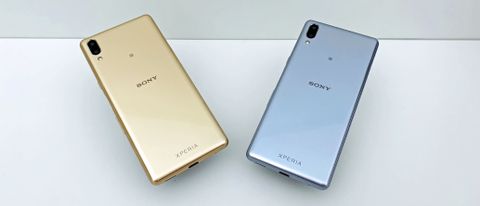Why you can trust TechRadar
Movies and games
- Notch-free screen is good for movies
- Fine for gaming, but not the best
- Thin speaker
The 18:9 screen shape gives the Sony Xperia L3 a bit more room for movies, assuming the footage’s own aspect ratio makes use of it. For example, play an episode of Good Mythical Morning on YouTube and you have to crop off some of the top and bottom of the image to make it fill the screen.
This can be pretty undesirable in content with carefully composed cinematography, like movies. However, it is better than having a notch or punch hole eat into the footage. And if you play a film with a 2.39:1 cinema aspect, the black bars at the top and bottom are much smaller than normal.
Like every phone at the price, the Sony Xperia L3 does not support HDR. Also typical, the internal speaker is a little thin, and not hugely loud. There is a headphone jack though. Phew. Phones at this price have not started leaving one out quite yet.
The Sony Xperia L3 is fine for video, for Netflix-watching, but only to the extent that is now the baseline for entry-level phones like this.
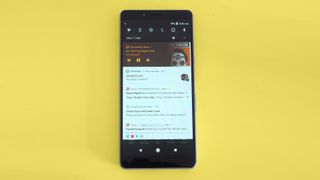
Gaming performance is similar. A decent-size display and 32GB of storage offer scope for almost any Android game you like. There are limits, though. At launch the Sony Xperia L3 does not support the Vulkan API, so you can’t play titles like Ark: Survival Evolved or Need for Speed: No Limits. This may change with a software update. It may not.
Just like other sub-£200/$250 phones, it can’t show off the most impressive titles at their best. They’ll either chug with graphics maxed-out, you won’t be able to set the visuals all that high (as in PUBG) or the screen resolution will mandate less flashy visuals.
There’s limited room for gamer snobbery in this class, though. You can play PUBG. You can play Asphalt 8. And casual games will run just fine.
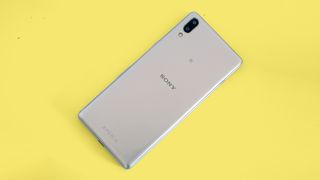
Performance
- Passable GPU power
- MediaTek Helio P22, not the more popular Snapdragon series
- 3GB of RAM
But how powerful is the Sony Xperia L3, really? Sony has made that question more difficult to answer, by blocking Geekbench 4 testing. However, we do know it has 3GB of RAM coupled with the MediaTek Helio P22, also used in the Nokia 3.1 Plus, which scores around 3,500 points in Geekbench 4.
While that is a solid score for a basic smartphone, the phone’s GPU is only passable. It’s a PowerVR GE8320, which scores a fairly weak 639 points in the 3DMark Sling Shot test, well under the 920 achieved by the Moto G7 Power.
What this tells us: it’s a good job the Sony Xperia L3 has a 720p-grade screen rather than a Full HD one. It would likely struggle rendering texture-heavy games at a higher resolution.
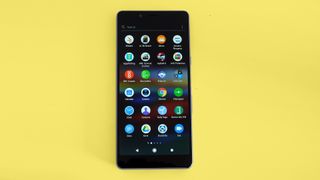
Software
- Dated Android 8.1 software
- Last-gen Sony UI
- Some very minor lag
The Sony Xperia L3 runs Android 8.1.0 and a custom Sony skin. This is a dated version of Android, and the interface is not Sony’s latest either. It strays from the default Android layout without adding anything to make it seem particularly dynamic.
Home screens and an alphabetic vertical-scrolling app drawer are the standard in Android at present. The Sony Xperia L3 has home screens and an app drawer made of pages of icons, arranged in the order in which they’re installed. This is what vanilla Android had years ago.
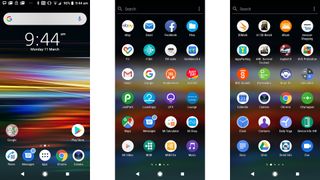
You can switch this to an alphabetic order, fiddle with the layout manually or order apps by use. But you can’t get the standard Android approach, a single vertical scroll of apps. Still, this style is valid, and as you can add folders to the app drawer there’s an extra level of organization on offer.
The Sony Xperia L3’s general performance is fine. Apps that have been used recently, cached in system RAM, pop up again quickly. Full app loads are less snappy than those of a high-end or mid-range phone, and there are some minor bits of lag that tell you this isn’t a hugely powerful mobile.
However, there’s none of the gear-crunching lag that is outright annoying in some lower-end phones that use MediaTek chipsets. In parts it’s less nippy than a Moto G7 Power or Honor 10 Lite, but not dramatically so.
Current page: Anything else I should know?
Prev Page Battery life and camera Next Page Verdict and competitionAndrew is a freelance journalist and has been writing and editing for some of the UK's top tech and lifestyle publications including TrustedReviews, Stuff, T3, TechRadar, Lifehacker and others.
